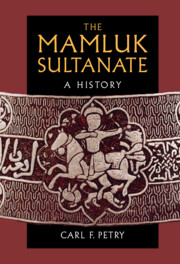Book contents
- The Mamluk Sultanate
- The Mamluk Sultanate
- Copyright page
- Dedication
- Contents
- Figures
- Maps
- Maps
- Introduction
- 1 Synopsis of Events
- 2 Ethos of the “Slave-Soldiers” Regime
- 3 The Mamluk Sultanate from a Global Perspective
- 4 Vocational Classes
- 5 The Political Economy
- 6 Cultural Legacy
- 7 The Rural Environment, Gendered Issues, Minority Communities, Sufi Practice
- Reflections
- Notes
- Bibliography
- Index
1 - Synopsis of Events
Published online by Cambridge University Press: 05 May 2022
- The Mamluk Sultanate
- The Mamluk Sultanate
- Copyright page
- Dedication
- Contents
- Figures
- Maps
- Maps
- Introduction
- 1 Synopsis of Events
- 2 Ethos of the “Slave-Soldiers” Regime
- 3 The Mamluk Sultanate from a Global Perspective
- 4 Vocational Classes
- 5 The Political Economy
- 6 Cultural Legacy
- 7 The Rural Environment, Gendered Issues, Minority Communities, Sufi Practice
- Reflections
- Notes
- Bibliography
- Index
Summary
An experiment in state-building during the medieval Islamic period, the Sultanate emerged in consequence of a junta by Mamluk slave-soldiers against their patron, the Ayyubid ruler al-Salih (647/1249). A junta participant, al-Zahir Baybars (r. 658/1260-676/1277), consolidated the coup into a stable government. His successor, al-Mansur Qalawun (r. 678/1279-689/1290), sustained the regime, but it was Qalawun’s son, al-Nasir Muhammad (3rd r. 709/1310-741/1341), who oversaw the Sultanate’s halcyon era. Egypt, Syria and the Red Sea were united as the leading imperial power of the central Arab lands. Al-Nasir terminated rivalry from the Sultanate’s main opponent, the Mongol Il-khanate in Iran. His descendants presided over the Sultanate as a quasi-dynasty until an officer of Circassian origin, al-Zahir Barquq (r. 784/1382-801/1399) restored the rule of 1st-generation Mamluks. Barquq and his prominent successors, al-Muʾayyad Shaykh (r. 815/1412-824/1421)and al-Ashraf Barsbay (r. 825/1422-841/1438) upheld the regime’s sovereignty against resistance from insurgents in Syria and eastern Anatolia, while enhancing its role as a key participant in commerce with South and East Asia via the Red Sea. They also initiated policies of extraction and monopolies over lucrative commodities that met the fiscal demands of the military hierarchy but compromised the economy long-term. The Sultanate’s final rulers: al-Ashraf Qaʾitbay (r. 872/1468-901/1496) and Qansawh al-Ghawri (r. 906/1501-922/1516) continued these policies until the regime’s defeat by the Ottomans.
Keywords
- Type
- Chapter
- Information
- The Mamluk SultanateA History, pp. 5 - 52Publisher: Cambridge University PressPrint publication year: 2022

